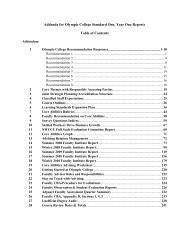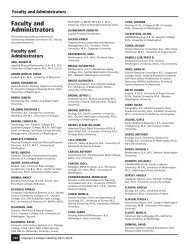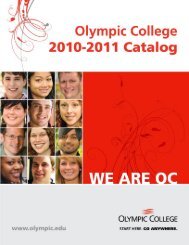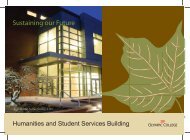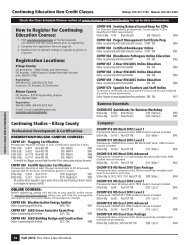Full MME Newsletter - Washington State University College of ...
Full MME Newsletter - Washington State University College of ...
Full MME Newsletter - Washington State University College of ...
Create successful ePaper yourself
Turn your PDF publications into a flip-book with our unique Google optimized e-Paper software.
Making Room for More<br />
New Equipment Provides Big Impact for Future Engineers<br />
Members <strong>of</strong> the School <strong>of</strong> <strong>MME</strong> advisory board received a tour <strong>of</strong> lab equipment upgrades.<br />
new data acquisition system, laser scanners, and a 3D printer<br />
A are some <strong>of</strong> the improvements that mechanical engineering<br />
students will soon see, thanks to a $1.82 million <strong>Washington</strong> state<br />
appropriation to the WSU School <strong>of</strong> Mechanical and Materials<br />
Engineering.<br />
“Engineers are extremely important to the <strong>Washington</strong> state<br />
economy. They are the ones who are going to solve global challenges<br />
in energy, the environment, and health,” says David<br />
Field, interim director <strong>of</strong> the School <strong>of</strong> Mechanical and Materials<br />
Engineering. “Our state legislators understand that for our students<br />
to be trained to meet these global challenges, state-<strong>of</strong>-the-art equipment<br />
is more important than ever.”<br />
WSU’s engineering programs will be seeing a dramatic increase<br />
in the number <strong>of</strong> engineering students in the next few years. Facing<br />
increasing industry demand for engineers and computer scientists,<br />
the state legislature allocated $3.8 million each to WSU and the<br />
<strong>University</strong> <strong>of</strong> <strong>Washington</strong> to increase capacity in engineering and<br />
computer science programs. The initiative aims to address a shortage<br />
<strong>of</strong> <strong>Washington</strong> state engineers and will result in a more than 30<br />
percent increase, or a total <strong>of</strong> 425 new students, in WSU’s engineering<br />
programs. With support from this initiative, WSU mechanical<br />
engineering programs in Bremerton and Everett are also expanding,<br />
which allow place-bound students to improve skills that are needed<br />
in industry.<br />
But, to grow the programs, one <strong>of</strong> the limiting factors has been<br />
lab space and equipment.<br />
Approximately half <strong>of</strong> the $1.82 million appropriation will go<br />
to update labs in Pullman, while the other half is split between the<br />
WSU mechanical engineering programs in Bremerton and Everett.<br />
The Bremerton and Everett funds will support development <strong>of</strong> lab<br />
capabilities on those campuses and should enable the students to<br />
complete their studies without traveling to Pullman for the laboratory<br />
portion <strong>of</strong> the curriculum, says Cill Richards, pr<strong>of</strong>essor in the<br />
School <strong>of</strong> <strong>MME</strong> who is overseeing the laboratory fund committee.<br />
In Pullman, labs for undergraduate classes are being upgraded<br />
and modernized. The laser scanner and 3D printer will serve five<br />
classes and additional elective courses. New equipment, including<br />
lathes and mills, are being added to manufacturing laboratories. A<br />
new internal combustion engine test stand will serve five courses as<br />
well.<br />
“Laboratory classes are the current bottleneck in the mechanical<br />
and materials engineering programs,” says Bob Olsen, associate<br />
dean <strong>of</strong> undergraduate student services. “Some equipment used<br />
for these classes is older than the students in the courses, and, in<br />
some cases, time for hands-on laboratory and design experiments is<br />
limited by the amount <strong>of</strong> equipment available.”<br />
Important changes in data acquisition are also being made in the<br />
labs to catch up with the 21st century.<br />
“The new data acquisition will allow students to access data from<br />
experiments via their own computers using a web browser,” said<br />
Richards. “They can also use an app if they have a smart phone.”<br />
The intent is not that students can do the labs everywhere but<br />
that instructors can have students in a lecture class run an experiment<br />
together to supplement lectures, she said.<br />
“Much <strong>of</strong> the equipment not only upgrades what is already in the<br />
lab, but enhances the laboratory experience and strengthens the<br />
connections to material in lecture classes,” she said.<br />
“One <strong>of</strong> the real strengths <strong>of</strong> <strong>MME</strong>’s program is the hands-on<br />
experience that our students get,” she added. “This equipment will<br />
strengthen the quality <strong>of</strong> our program.” ❚<br />
School <strong>of</strong> Mechanical and Materials Engineering | Spring 2013 3



